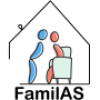Article 10
How to Manage Depression in the Elderly

Depression is a common issue among many elderly individuals. It can significantly impact both their mental and physical health, making it essential to understand how to recognize and address it effectively.
1. Understanding Depression in the Elderly
Depression may manifest differently in elderly individuals, with symptoms such as:
- Mood Changes: Persistent sadness or anxiety.
- Loss of Interest: Lack of interest in activities they once enjoyed.
- Physical Symptoms: Fatigue or sleep problems.
2. The Importance of Awareness
It is crucial to raise awareness among families and caregivers about depression in this age group. This includes:
- Recognizing Signs of Depression: Helping to identify symptoms for quicker intervention.
- Encouraging Communication: Talking about their feelings and problems can help lighten their psychological burden.
3. Providing Psychological Support
Psychological support strengthens the elderly’s ability to overcome depression. This includes:
- Active Listening: Loved ones should listen to their feelings and help them express themselves.
- Recreational Activities: Encouraging participation in activities they enjoy can help improve their mood.
4. Professional Treatment
In some cases, professional intervention may be necessary. Options include:
- Psychological Therapy: Such as cognitive-behavioral therapy to help change negative thought patterns.
- Medications: Antidepressants may be effective for some elderly individuals, but it is important to consult a doctor before starting any treatment.
Managing depression in the elderly requires an integrated approach that includes awareness, psychological support, and, when necessary, professional treatment. By recognizing symptoms and offering appropriate support, we can improve the mental health and quality of life of elderly individuals.
